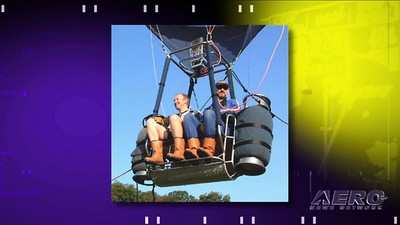Fri, Jun 17, 2022
AD 2022-13-03 Requires The Removal Of Any Installed P/N Cb2990 (Alugas) Fuel Cylinder
The FAA is adopting a new airworthiness directive (AD) for certain Cameron Balloons Ltd. (Cameron) fuel cylinders installed on hot air balloons.

This AD results from mandatory continuing airworthiness information (MCAI) originated by an aviation authority of another country to identify and correct an unsafe condition on an aviation product. The MCAI identifies the unsafe condition as cracks in the weld between the cylinder valve plate and the upper dished end of Cameron part number (P/N) CB2990 (Alugas) fuel cylinders, which could allow uncontrolled fuel leakage of liquid propane. This AD requires the removal of any installed P/N CB2990 (Alugas) fuel cylinder from service before further flight. The FAA is issuing this AD to address the unsafe condition on these products. DATES: This AD is effective June 30, 2022. The FAA must receive comments on this AD by August 1, 2022.
Supplementary Information: The Civil Aviation Authority (CAA), which is the airworthiness authority for the United Kingdom (UK), has issued CAA Emergency AD G-2022-0010-E, dated May 12, 2022 (referred to after this as “the MCAI”), to address an unsafe condition for certain Cameron fuel cylinders. The MCAI states: Five CB2990 (Alugas) cylinders have developed cracks in the weld between the cylinder valve plate and the upper dished end.

These cracks allow the release of propane from the cylinder. Failures have been observed during periodic inspection (hydraulic pressure test) and leak test. All the in-service failures seen to date have been from the batch of cylinders with serial numbers starting OC. It is likely that other CB2990 cylinders may develop similar failures in service. To address this potential unsafe condition this [UK CAA Emergency AD] * * * is issued to temporarily withdraw all CB2990 (Alugas) cylinders from service pending investigation of these failures. Cameron Balloons are working urgently with the original fabricator to determine the cause and scope of these failures. You may examine the MCAI in the AD docket at https://www.regulations.gov by searching for and locating Docket No. FAA-2022-0683. This condition, if not addressed, could lead to fire or explosion and consequent emergency landing. The FAA is issuing this AD to address the unsafe condition on these products.
More News
Light Gun A handheld directional light signaling device which emits a brilliant narrow beam of white, green, or red light as selected by the tower controller. The color and type of>[...]
“We have performed extensive ground testing by comparing warm up times, full power tethered pulls, and overall temperatures in 100 degree environments against other aircraft >[...]
While Taxiing To Parking The Right Landing Gear Leg Collapsed, Resulting In Substantial Damage Analysis: The pilot made a normal approach with full flaps and landed on the runway. >[...]
From 2014 (YouTube Edition): Exotic Rebuild Reveals Aerial Work Of Art During EAA AirVenture 2014, ANN's Michael Maya Charles took the time to get a history lesson about a great ai>[...]
Also: Project Talon, McFarlane Acquisition, Sky-Tec Service, JPL Earth Helo Tests Bombardier has earned a round of applause from the business aviation community, celebrating the fo>[...]
 ANN's Daily Aero-Term (12.13.25): Light Gun
ANN's Daily Aero-Term (12.13.25): Light Gun Aero-News: Quote of the Day (12.13.25)
Aero-News: Quote of the Day (12.13.25) NTSB Final Report: Gippsland GA-8
NTSB Final Report: Gippsland GA-8 Classic Aero-TV: Historically Unique -- Marlin Horst's Exquisite Fairchild 71
Classic Aero-TV: Historically Unique -- Marlin Horst's Exquisite Fairchild 71 Airborne 12.12.25: Global 8000, Korea Pilot Honors, AV-30 Update
Airborne 12.12.25: Global 8000, Korea Pilot Honors, AV-30 Update




